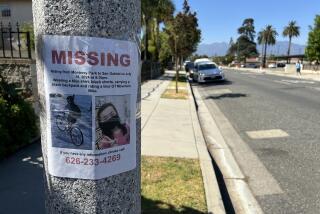History : SANTA ANA : Chinatown Torched in Ugly ’06 Incident
In the shadows of Santa Ana’s old City Hall, there is no clue that an ugly episode in Orange County history once happened here.
Before the permit-only parking lot and car dealership appeared on 3rd Street between Main and Bush streets, this was home to men who wore dark queues down their backs, worked hard for cheap wages and sent their savings home to China.
It was also grist for the local rumor mill and racial animosities.
The tiny Chinatown hamlet, which sprang up in the 1880s and thrived for more than 20 years, consisted mostly of redwood shanties. The men who lived there had left their wives and children in China and come to Orange County to build railroads, labor in the local grape and celery fields, and start up small businesses.
Santa Ana residents speculated then that nasty things were the norm among the 200 or so hard-working, hard-gambling Chinese. The local press called them “heathens.” The city fathers called the strange neighborhood “an eyesore.” The City Hall stood right next door.
And so on May 25, 1906, Chinatown suddenly vanished in flames.
“Everybody that knew anything knew it was going to burn down and we were all there to see it,” said Arthur J. McFadden, son of Orange County pioneer Robert McFadden, in a 1967 interview now kept at California State University, Fullerton. “They wanted to get rid of Chinatown and they just deliberately burned it down.”
About 1,000 local residents lined 3rd Street to watch the fire that had been ordered by the then-City Council in an emergency meeting, according to a 1970 account by Jim Sleeper, Orange County historian. The council had justified the action by declaring that a man found in the Chinatown shanties had leprosy. Therefore, they concluded, the entire enclave was a threat to the public health.
Most of the Chinese had apparently heard the rumors of doom and had fled.
According to McFadden, a young lawyer at the time, “They had the fire department standing by when the thing burned up” to protect surrounding buildings, including City Hall, from the flames.
The man purported to have leprosy was quarantined in a tent and died before doctors were able to examine him. Though several contemporary accounts say it is unclear what disease the man suffered, there is some doubt leprosy was the correct diagnosis.
“Burning down Chinatowns was a typical sort of activity in these days, and (leprosy) was usually the excuse used,” said Patricia Lin, a professor of women’s studies at Cal Poly Pomona who has studied the early Chinese settlers. “(In Santa Ana) the land had become much too valuable and the people wanted to develop it where there was just a bunch of shacks.”
The Chinese relocated to homes along the flood-prone Santa Ana River in the city of Orange and would never return to the small patch in Santa Ana. Six years after the fire, the 1910 government census found only one Chinese left in Santa Ana and 35 in Anaheim.
Ken Lau, who is a second-generation owner of the Santa Ana Food Market on 1st Street, not far from the original Chinatown, said, “When we came here, there were no remnants of it.” Lau’s father, Fred, settled in Santa Ana after World War II.
It was not until the 1950s that the Chinese population returned to turn-of-the-century levels. In recent decades, the county’s Chinese population has, according to the government census, surged dramatically from 2,832 in 1970, to 14,575 in 1980 and 41,955 in 1990.
More to Read
Sign up for Essential California
The most important California stories and recommendations in your inbox every morning.
You may occasionally receive promotional content from the Los Angeles Times.






